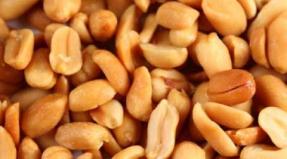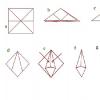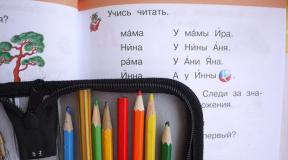What dry rations look like in different armies of the world. "dry rations in the armed forces of russia, ukraine and other countries"
MOSCOW, June 2 - RIA Novosti, AndreyKots. Today, June 2, our country celebrates the Day healthy eating... Nutritionists urge Russians to abandon excesses in food, not to get carried away with gastronomic experiments and always remember: food is just food, a set of proteins, fats and carbohydrates. And making a cult out of it is a harmful and senseless occupation. This simple truth definitely does not need to be explained to a million of our fellow citizens serving in the Armed Forces. Meals there have always been clearly ordered in the army - with a detailed calculation of calories for each soldier.
The menu of the soldier's canteen is drawn up in such a way that the soldier in no case gets poisoned by a perishable product, does not develop an allergy attack, does not starve, and at the same time does not leave for demobilization who has eaten to the point of indecency. The same applies to dry rations, which servicemen eat in war, exercises, and marches. In the modern field diet, you can no longer find "Breakfast of a tourist" - canned fish with barley, which conscripts from the 1970s-1980s still recall with shudder. The current Russian dry rations combine optimal calorie content, durability, variety of products and good taste.
Field feeding is organized according to similar principles in the armies of most countries of the world. But gastronomic traditions in different cultures differ significantly from each other. And a dry ration, which, say, a Pakistani private will gobble up on both cheeks, a Japanese soldier will not take in his hands. We present five of the most exotic field diets with a national flavor.
Australia
The main feature of the Australian CROM (Combat ration one man - combat ration for one person) is the uniqueness of each package. You won't surprise anyone with a buffet in a soldier's canteen, but an individual approach to each dry ration is extremely rare. Each soldier of the Australian army, when enrolled in the allowance, fills out a questionnaire in which he indicates what kind of food he would like to see in his combat diet. And the choice is rich there: beef barbecue, chicken, tuna with sun-dried tomatoes and basil, meatballs, spaghetti with hot sauce, chicken puree soup, fruit in syrup, cheddar cheese, raspberries, chocolates, chocolate drink, sweet biscuit and much, much more.
© AP Photo / Hiroshi Otabe
© AP Photo / Hiroshi Otabe
CROM's trademark is Vegemite pasta, a national Australian dish. This is something like a gooey jam or pate based on beer wort and various additives. It tastes like beef broth. "Wedgeite" the Australian military spreads literally on all suitable surfaces - crackers, crackers, bread, rolls. This paste is included in every ration, regardless of personal preference. However, it will not be possible to indulge in all the gastronomic grievous ones - the maximum weight of the daily ration in plastic packaging should not exceed 1.5 kilograms. In conditions of intense physical labor, this is not so much.
France
The gastronomic preferences of the French have long become the hallmark of their country. The composition of the army RCIR (Ration de combat individuelle réchauffable - individual warmed up combat ration) can cause black envy even among the regulars of expensive restaurants. If you ever see a guy in camouflage on TV, who sits in a trench and sedately smears venison pate on a cracker with a bayonet-knife, you can be sure he is French.
In addition, RCIR includes cold cuts, Creole pork, cream pudding, duck ravioli, meat chili, rabbit casserole, paella, salmon pate, ham and beans and other delicacies. All of these dishes are packaged in thin cans that can be quickly heated in the field with a disposable burner. In total, there are 14 types of rations for different combat missions and climatic conditions. It is the French dry ration that is considered the most popular in the largest online store eBay.
Singapore
In the nomination "asceticism" the Armed Forces of Singapore are confidently winning. Despite the fact that this city-state is one of the richest in the Asia-Pacific region, it feeds its military more than modestly. There are three types of dry rations in Singapore: Type M (for Muslims), Type N (for non-Muslims) and Type V (for vegetarians). The standard Muslim diet consists of just three meals: soy milk, Sichuan chicken noodles, and red bean dessert. For non-Muslims, instead of chicken, pork or minced meat can be added to the noodles, and for vegetarians, the pasta is seasoned with vegetable stew. In addition, each set includes biscuits, juice powder and vitamins.
Although this dry ration cannot boast of a gastronomic variety, it consistently provides a soldier with 3,500 kilocalories per day, which is quite enough for daily service outside the place of permanent deployment. A plus are the relatively small dimensions of the dry ration package - about 20 by 18 centimeters.
Italy
Despite the fact that the Italians can give the French a hundred points of head start in their gastronomic "jumps", their army ration RVSC (Razione Viveri Speciali da Combattimento - a special food ration for military personnel) is not distinguished by special delights. It includes pasta and bean soup, beef dumplings, mackerel in olive oil, canned sausages, fruit salad, fruit jelly, sweet and savory crackers, chocolate, salt, vitamin tablets, instant coffee, sugar, condensed milk. In total, there are seven varieties of these diets, distinguished by the color of the package. Everything is delicious, but no frills.
On the other hand, Italian servicemen are the only ones in Europe who, on completely legal grounds, can use strong alcoholic drinks in military exercises. Each daily RVSC contains a small container with 50 grams of a forty-degree alcoholic beverage, mainly cognac. A little, of course, for complete happiness. But nothing prevents us from accumulating a decent supply of these "scales" by the end of the week and how it should be noted with comrades-in-arms the completion of the exercises.
Japan
Contrary to stereotypes about the cuisine of the Land of the Rising Sun, there is no sushi in the dry rations of the Japan Self-Defense Forces. Moreover, the Type I and Type II combat rations are almost more modest than those in Singapore. The daily dry ration is designed for three meals a day, and each meal begins with 200 grams of rice. There are a great many dishes based on it in Japanese diets: plain white rice without additives, rice with red beans, rice with vegetables, rice with meat, rice with spices, fried rice, rice with green peas, rice soup and more than a dozen different categories.
The second, as a rule, is canned tuna and salmon, hamburgers, chicken with spices and mackerel in tomato sauce. And all sorts of exotic things - scallops, seaweed salad, Japanese snow crab meat, and so on - can be found only in officers' canteens at permanent deployment points, where there are freezers suitable for all this wealth.
Italian designer Giulio Lacchetti not only found out what exactly lies in the backpacks of army fighters from the USA, Europe, Asia, but also with the help of photographer Fabrizia Parisi made an exposition on this unusual topic for the World Expo 2015 in Milan.
Italy

The field diet of the Italian military is an echo of wealth and satiety national cuisine, albeit in a primitive synthetic version: here is pork in jelly, and ravioli with meat sauce, and, of course, pasta.
The soldiers will not have to deny themselves dessert: there are coffee and condensed milk, crackers and gummies, canned fruit salad, muesli in chocolate. The picture is completed by salt, sugar, napkins, plastic utensils and dishes, a blister with multivitamins.
Russia


Goulash, liver and meat pâté, beef with buckwheat, meat with peas and carrots, canned bacon - vegetarians in the ranks of the Russian army are probably not happy. Perhaps a snack with biscuits, melted cheese, jam and sweets? You can wash it down with tea or coffee, adding milk to taste, and finish the meal with multivitamins and chewing gum.
The Russian set also includes tablets for water purification, antibacterial and ordinary napkins, plastic devices, matches.


Veggie ratatouille with pasta, crackers, almond and poppy seed cake, peanut butter, and you can wash it down with coffee or instant fruit drink. Sparse, which is already there, but the set includes toilet paper.
Great Britain
As the main dish, Her Majesty's warriors receive chicken sausage with beans, pasta with tuna and, oddly enough, paella. Tabasco sauce is a nice addition. Tea, coffee, compote or fruit drink can be drunk with lemon muffin, raspberry jam, caramel muesli bar, salted cashews, candy or chocolate paste. Water disinfection tablets, paper towels and wet wipes are also provided.
Lithuania
Stew with barley and canned chicken broth, crackers and nuts, blackcurrant jam and fruit vitamin drink, and for sweets - chocolate.
Ukraine


For the first, the Ukrainian soldiers have meat broth, for the second - canned food (three types of meat and one type of fish, namely, sprat). Finish off your meal with crackers, jam, candy, and tea (or a fruit drink). The military is also supplied with napkins (regular and disinfectant), as well as vitamins.
New Zealand
Chicken in creamy sauce with potatoes, Thai lamb curry, cheese, bread, canned soup, onion chips, instant noodles; ketchup, salt and pepper to taste ... And then more peanuts with raisins, condensed milk, sweets, chocolate milk and isotonic drink, tea and coffee, chewing gum.
Germany
In the field, the Germans eat Indian rice with chicken cutlet, ravioli with mushroom sauce, and meat pate sandwiches. For tea and coffee with milk - biscuits, jam and sugar. The dry ration includes tablets for water purification and wet wipes.
Israel

Chicken and beef meatballs with rice, beans in tomato sauce, tuna in oil are the main dishes. There is also something for vegetarians: rice-stuffed grape leaves, rice with peas, corn, olives, peanuts. For sweets - a variety of candied fruits, halva and chocolate dessert.
France
Dry rations of the main gourmets of Europe cannot be primitive. It contains: beef tortellini, oriental salad, salmon pate, canned soup, milk dessert, savory and sweet biscuits, marmalade and chocolate, nougat and muesli, an energy bar, tea, coffee and a chocolate drink.
Sweden
The Swedish military have breakfast with yoghurt and cereals. For lunch - chicken curry with rice, and for dinner - meatballs with pasta (or vice versa). For dessert - chocolate muffins, oatmeal cookies or, for those who despise sweets, salty nuts. You can wash it down with an isotonic drink with the taste of exotic fruits, coffee or chocolate.
Tanzania
Tanzanian soldiers eat stewed chicken, rice and oatmeal on the march, and biscuits for sweets. Actually, that's all, but the choice of drinks is large: orange and mango juice, coffee and tea.
Thailand

Everything in Asian style is exquisite and simple: fish soup, jasmine rice, beef with chili and garlic, dried fruits. Oh yeah, and a plastic spoon.
“Army rations remind us that cultures of different nations can be similar, but they will never be the same. K-Ration kits show that even in extreme situations people do not forget about the traditions of their country, ”the author of the exposition believes.
How are servicemen provided with food in the field in different countries of the world? This article will focus on dry rations of the Armed Forces of Russia and other countries of the world.
"The Russian army uses the" Individual diet "in two main varieties: IRP-B and IRP-P. (Respectively: combat and everyday)
The daily food ration does not differ much from the combat one, it is not much less because it is used when there is a field kitchen and therefore a large set of products is not required, unlike the combat one, when it is not always possible to use the field kitchen.
The contents of the army dry ration IRP can be consumed both cold and hot, do not require cooking and generally have water at hand. The canned food of the new dry ration is made of a multilayer polymer material that is resistant to high temperatures, radiation, bacteriological and chemical effects, and not from tin, as before, which reduces the total weight, simplifies opening and heating the canned contents, and also withstands significant mechanical stress. With the help of a handle, it is possible to attach several dry rations to the equipment, which is undoubtedly a plus, unlike the cardboard boxes that were used in old dry rations.
The content of the ration allows you to eat during the day in the field if you have at least cold water at hand (for diluting concentrates).
Inclusion in a set of ready-made porridges can serve as a quick snack on the go, or as a normal main course, if heated. Minced meat and sweet mixture are well eaten with biscuits, and stew can be eaten with one of the cereals.
The total weight of the IRP-P is 1.625 kg, the weight of the contents is 1.330 kg. Energy value about 3360 kcal
For comparison, the composition of the dry ration of the Soviet Army until 1990 included 400 grams. crackers (plus 400 grams of bread), 1 can of canned meat 250 gr., 2 cans of porridge with meat 265 gr each, 60 grams of refined sugar, 3 gr. tea. Scanty in name, but very satisfying. You can also collect dry rations yourself, from ready-made freeze-dried products, composing it according to your taste and discretion. "
Individual food ration (IRP) - developed by scientific institutes around the world. Russian dry rations are considered the best in the world, they are balanced in the presence of carbohydrates, proteins and fats for quick assimilation of products in cold and hot form. There are several types of dry rations in different packages: cardboard, sealed and vacuum, we will tell you about everyday food in cardboard packaging.












Instant juice (black currant, peach and raspberry).





Ukraine
For the Ukrainian Army, a "Combined Arms Set of Dry Products" was developed, the composition of which was regulated by the Resolution of the Cabinet of Ministers of Ukraine No. 426 of March 292002 year ... The idea was similar, but in view of its quality and saturation, in my opinion,the abor was created with a frank sense for the development of budgetary funds. In addition, unfortunately, there are no means for cooking: a portable warmer, dry alcohol andmatches are windproof.
* In the case of completing a combined-arms set of dry products without biscuits from upholstery wheat flour or second-grade wheat flour, it is allowed to issue directly to the military unit 500 g of bread from first-grade wheat flour.
A combined-arms set of dry products is provided to personnel in cases where it is not possible to prepare hot food from products according to the basic nutritional norm, while the period of nutrition should not exceed 3 days.
So, the "Combined Arms Set of Dry Products" is completed in accordance with the requirements of TU U 8010185.001-2001:
Expiration date: 2 years
Weight: 1.8 kg.
Variant of the "Combined Arms Set of Dry Products" set in a cardboard box.
Italy
An Italian dry ration contains: a bag of 40% alcoholic drink Cordiale, two bags of coffee with cream and one bag of powdered coffee cream, bags with sugar, salt and biscuit (i.e. unsweetened cookies instead of bread). Main dishes: pasta (i.e. pasta with a sauce of meat, tomatoes and spices, with the addition of grated cheese), bean soup, two jars of canned turkey. There is a rice salad and sauces and spices bags for the main dishes. For dessert - a Power Sport chocolate bar, canned fruit salad and muesli. Water is not included in any dry rations - it is issued separately, or, if possible, is obtained on site using disinfectants.
Great Britain
British dry ration contains: Kenco coffee and Typhoo tea bags, a bottle of Tabasco hot seasoning and a bag of other sauce. Main dishes include: Chicken Tikka Masala and Vegetarian Pasta. There is also pork with beans in tomato sauce. There is a sponge cake instead of bread and jam for dessert, as well as bags with sugar, salt and spices. British dry rations are distinguished by a huge amount of sweets, gummies and snacks: from a mixture of dried fruits and nuts to an apple Fruit Pocket. Plus bags of Polo mints.
The U.S. Army ration contains: almond poppy seed cake (aka muffin), a bag of dried and sweetened cranberries, spiced apple cider (a hot American soft drink), a bag of iced lemon tea, a bag of peanut butter, and lots of crackers instead of bread. Main courses: Crumbles pasta with meat and vegetables in a spicy tomato sauce. There are bags of ketchup, salt and sugar, as well as chewing gum.
France
A French dry ration contains: a can of venison pâté de la venaison de cerf, cold cuts with duck confit, Creole pork and a bag of SRD puree soup. Instead of bread - biscuit. For dessert - chocolate cream dessert (French chocolate pudding with liqueur). There is also a packet of coffee and a flavored vitamin drink, mayonnaise, muesli and some Dupont d'Isigny caramel. There is also a disposable mini-burner with a tablet of dry fuel for heating food and water (included in dry rations and other countries) and matches. Some dry rations (for example, American) also use chemical heating. Also, all dry rations have additional equipment - disposable spoons, napkins, toothpicks, etc.
Australia
Australian dry rations contain: sandwiches, Fonterra cheddar cheese and Vegemite - a thick paste based on yeast extract (the national Australian dish). Main dishes: noodles with beef broth (dry mix), meatballs with spices and pasta with tuna and chili sauce. There are a lot of sweets, biscuits instead of bread, soft fruit drinks (powdered), bags of ketchup and other sauces, bags of sugar and salt, a bag of coffee, two unappetizing looking green bags labeled “Chocolate Diet” and straws of condensed milk for dessert. as well as muesli.
Spain
Spanish dry rations contain: a jar of green beans with ham, a jar of squid in vegetable oil and pate. There's also a bag of powdered vegetable soup, a bag of coffee, peaches in syrup for dessert, and crackers instead of bread (no crackers in the picture). Spanish dry rations are distinguished by a large number of tablets with vitamins, glucose, for water purification and rehydration.
Canada
Canadian dry ration contains: Bear Paws in a bag, there is a bag with a traditional maple syrup... Main dishes: salmon fillet with Tuscan sauce, vegetable couscous. There is also peanut butter, large caramel and raspberry jam for dessert, ketchup and other sachet sauces, sugar, salt and spice packets, a packet of coffee, Bread / Petit pain toast (thin slices of white bread), and gum.
Norway
The Norwegian dry ration contains: bags of beans and bacon in tomato sauce, an Oatie steak in golden foil, a bun, a bottle of Tabasco hot seasoning, a bag with a different sauce, salt and sugar, bags of Kenco coffee and Earl Gray tea, as well as the fortified Sport Drink and a bag of ready-made apple juice with vitamins, and a bag of Tooty Frooties for dessert.
Germany
The German dry ration contains the following main dishes: pork sausages and goulash with potatoes. There is cheese, liver pâté and rye bread. There is a bag of ketchup, bags of mayonnaise and mustard, sugar, salt, a bag of coffee. For dessert - fortified fruit juice (powdered), dry Italian biscuit, pieces of sweetened grapefruit in a bag, cherry jam and apricot jelly.
Estonia
Estonian dry rations contain: stuffed with meat Felix peppers in tomato sauce, Hame chicken pate, a jar of smoked sprats in oil (possibly sprats - translated from English) and fried liver with potatoes in a jar. Plus a couple of crispbreads, bags of salt, sugar, two Greenfield tea bags. For dessert - halva with vanilla, as well as muesli, apple and berry jam, honey.
Japan
Japanese dry rations contain: mackerel in tomato sauce, white boiled rice, Gomoku fried rice, disposable tray and fork, or rather a spoon-fork. No water is needed for cooking - everything is ready to use. Like dry rations of armies of all countries of Southeast Asia, Japanese dry rations are distinguished by an extremely small number of components, which does not prevent it from providing normal food for servicemen in the field.
Republic of Korea (South Korea)
Korean dry ration contains: Japchae boiled rice with vegetables, spices and meat - ready to eat, dry soup mixture in a bag, dry noodles, two types of vegetable oil, a bag with spicy Korean seasoning and a bag with chocolate dragees. Also includes disposable tableware.
P.S.
The presented dry rations are just some of the existing manning options, which, for example, in the US Army, may number more than 20. "
From the new 2012, the soldiers of the Russian army will receive almost three times more - such a decree was signed by Russian President Dmitry Medvedev. Well, now the fighters in Russia will be able not to limit their stomachs with dry army rations, buying in addition something tasty to raise their morale.
M PORT invites you to find out - what are the soldiers fed all over the world?
It is quite possible that after that you will abruptly change your citizenship and go to the army.
Ukraine
Ingredients: wheat biscuits, porridge, canned meat or fish, tea bags, sugar, caramel, broth, stew, canned fish, sausage, jam, paper napkins, plastic spoon.
Russia

Canned meat or meat with porridge, canned fish, biscuits, boiled beans, dry milk drink, fruit jam, tomato sauce, tea, instant coffee, sugar, matches, napkins (dry and wet), vitamins in tablets, tablets for water disinfection.
USA

Pork Ribs, BBQ Sauce, Tortillas, Potato Soup, Blackberry Jam, Peanut Butter, Skittles, Nuts and Raisins Mix, Chewing Gum, Sugar, Instant Coffee, powdered milk, a bottle of lemonade, salt, a wet wipe, toilet paper.
South Korea

Fried kimchi (pickled vegetables) with meat, fried rice with ham, sausage, white beans in sauce, almond cake, chocolate candy.
France

Pork, rice, pineapple, cold cuts, duck confit and beans, venison pie, fish soup, rice pudding with vanilla, biscuits, fruit jelly, caramel candies, chocolate, lemonade, tea bags, instant coffee, hot chocolate drink, sugar, salt and pepper, napkins.
Australia

Beef bbq, chicken, tuna with sun-dried tomatoes and basil, chicken puree soup, fruit in syrup, cheddar cheese, raspberries, chocolates, chocolate drink, sweet biscuit, vegemite, lollipop, tea bags, condensed milk, sugar, instant coffee, ketchup, salt, pepper, chewing gum, sponge.
Italy

Menu: pasta and bean soup, beef dumplings, mackerel in olive oil, canned sausages, fruit salad, fruit jelly, sweet and savory crackers, chocolate, salt, vitamin tablets, instant coffee, sugar, condensed milk, matches, three toothpicks, three disposable toothbrushes.
Sweden / Norway

Menu: stewed cod in sour cream with tomatoes, oatmeal cookies, raisins, energy drink, instant coffee, chewing gum and a wet wipe.
Great Britain

Mini burgers and beans, dumplings in tomato sauce, vegetable puree soup, pudding, cheese, lemonade or fruit drink, chocolate drink, tea bags, instant coffee, sugar, salt, mint candies, napkins. There is a vegetarian menu option.
Canada

Menu: steak, mashed potatoes, tomato soup with croutons, bread. Peach drink, chocolates, honey cookies, instant coffee, sugar, salt, pepper, toothpick, matches and wet wipes.
Well, where did you lather up to serve?
Individual food ration (IRP), and in the common people dry rations, is created for special living conditions in which the preparation of hot food is impossible. All states have their own combat and daily kits. How they differ, and what they have in common, we will consider by reviewing the dry rations of different countries and see what the soldiers eat in a military situation.
Before proceeding directly to the analysis of the internal content of the IRP, let's figure out what they are in general. Most often, one set is designed for one person and includes breakfast, lunch and dinner. Options for multiple soldiers are possible. Regardless of the country of the manufacturer, they distinguish between the everyday version - IRP-P and combat - IRP-B.
Everyday dry ration
IRP-P is intended for food for the whole day. Inside the package there is a leaflet with a table indicating when and what to eat. The assortment of dishes is not so big, because usually the daily diet is used where there is a field kitchen.
The daily dry ration includes:
- snacks (biscuit biscuits, vegetable stew, minced meat);
- main dishes (porridge with meat, stew, vegetables with meat;
- tea and sweets (tea bags, coffee, milk powder, an adaptation drink to improve kidney and liver function, fruit jam, a bar).
In addition, there is salt, pepper, sugar, multivitamins. For lighting a fire, dry fuel, a canned food warmer, wind- and water-resistant matches, disinfecting napkins and cutlery are intended.
Its composition may differ depending on the type of IRP-P. Usually packing is indicated by numbers 1-7, which are indicated on the package. Servicemen are provided with such dry rations at the expense of the state. They are used during exercises, on hikes, in conditions where there is no other way to eat normally. According to the norms, food in this way should not be more than 7 days.
Combat dry rations of different countries
The combat set of products is designed to feed one person during the day (breakfast, lunch, dinner) with increased loads. IRP-B is intended for:
- for law enforcement agencies, fit into alarming suitcases;
- to provide food for military personnel;
- is an emergency supply of food in emergency and unforeseen situations, for example, for flight crews performing long non-stop flights;
- can be used by tourists, hunters, fishermen, crews of submarines and surface ships, humanitarian organizations.
Unlike the IRP-P, the combat army dry ration is richer. It includes:
- army biscuits;
- canned meat, meat and vegetable, meat and vegetable products;
- canned vegetable snack bars;
- liver pate;
- tonic drink, tea, coffee, dry milk drink;
- multivitamins;
- salt, pepper, sugar;
- tomato sauce;
- condensed milk, fruit bar, jam, chocolate paste;
- chewing gum;
- dry fuel;
- heater;
- matches;
- cutlery;
- napkins;
- means for disinfecting water.
Dry rations from around the world and their distinctive features
The collection of dry rations from different countries of the world will allow you to see which army provides its fighters better. Each of them is a one-day or one-time norm for one person.
Russia
IRP in RussiaRussian IRPs are considered the "richest" of all countries. One dry ration is designed for three meals and includes:
- four canned food (stew: minced meat or pate, meat and vegetable and fish);
- army crackers or biscuits - 6 packs;
- instant tea - 2 sachets;
- dry drink to restore strength and improve work internal organs - 1 sachet;
- coffee - 1 sachet;
- sugar - 4 sachets;
- jam - 3 sachets;
- tomato sauce - 1 sachet;
- multivitamins - 1 tablet;
- water disinfectant - 3 tablets;
- dry fuel - 4 pieces;
- warmer for canned food - 1 piece;
- spoon, can opener - 1 piece;
- windproof matches - 1 pack;
- wet wipes - 3 pieces.
The kit contents are approximate and may vary depending on the manufacturer and conditions of use.
USA
Today, the used options for IRP in the United States are MRE, or Meal Ready to eat, First Strike Ration. The energy value of the MRE kits is approximately 1200 kilocalories, the weight of any of them is approximately 750 grams. One ration is for one meal. You can choose any of 24 packages with different contents:
- canned meat or fish as main dishes;
- cereals, vegetables or fruits, as secondary dishes;
- hot drinks, juices, isotonic drinks;
- crackers or bread;
- jam, peanut butter;
- seasonings: sugar, salt, pepper;
- gum;
- cookies, candy, or biscuits;
- milk protein shakes;
- cutlery matches, napkins, toilet paper;
- warmer for food.

Since each set is one meal, you need 3 of them per day. You can choose the options to your liking.
First Strike Ration dry rations are intended for soldiers carrying out orders of increased load away from units. Unlike MRE, it is designed for daily nutrition, although it is slightly lighter in weight. The energy value of the set is 2300-2500 kilocalories. The products are packaged so that they can be consumed in any situation, even while hiding from bullets.
Germany

The German army gives its soldiers dry rations for two meals. They are called Einmannpackung and are available in three versions. Depending on which one is chosen, inside you can find a main dish - lentils with sausages, noodles with bolognese sauce or goulash with potatoes. For starters, there is jam, processed cheese and sausages. Also included are bread or crackers, instant porridge, fruits. Drinks include tea bags, coffee and powdered juices. According to the rules, each soldier must have his own taganok, so he is not included in the IRP. But there are tablets for water purification, matches, napkins and garbage bags.
Israel

Despite the fact that there are no particularly distant places in Israel where the military can be sent, dry rations are also being developed in this country. They are called Manot Krav. One set is designed for an entire tank crew of four and includes:
- tuna - 4 cans;
- soft halva;
- chocolate spread;
- sardines - 1 can;
- pickled vegetables - 1 can;
- olives or nuts - 1 can;
- mustard and ketchup bags;
- candy;
- spoons, garbage bags.
Most of the Israeli RPI consists of canned food, but if possible, soldiers are supplied with fresh fruit and bread.
Great Britain
In the UK, you can count on both multiclimate ration ration - an all-weather ration, as well as Operational Ration Pack, General Purpose - an operational ration general purpose... There are also options for vegetarians. IRPs are designed for a day with two or three meals.
The English IRP is distinguished by a huge amount of sweets: sweets, gummies and snacks, bags of Polo mint candies. The main products include dumplings in tomato sauce, Tikka Masala chicken, beans, mini burgers, vegetable puree soup, pudding, cheese. Instead of bread, a biscuit is offered. The assortment of drinks is also rich: lemonade or fruit drink, chocolate drink, tea, instant coffee. The set includes sugar, salt, napkins, tablets for water purification.
Australia
Australian dry rations are Combat Ration One Man. Has three variations:
- Combat Ration One Man (CR1M) - a fighter's ration for one person.
- Patrol Ration One Man (PR1M) - Patrol ration, for one person.
- Combat Ration 5 Man (CR5M) - ration of a fighter, for five people.
If we consider CR1M, then the menu is offered for 2.5 meals and includes:
- first and second courses, canned food and sauce;
- appetizer - chocolate, muesli bar, biscuit;
- drinks - coffee, instant drink;
- accessories - toilet paper, matches, napkin.
Also, the set includes a metal universal device in the form of a spoon, which also serves as an opener for cans and bottles.
Canada
The Canadian military provide an Individual Meal Pack or Supper Menu. The kits are designed for three meals, balanced, energy value is 1200-1400 kcal. The approximate composition includes:
- first course - mushroom, chicken or tomato soup;
- second course - meat, omelet, chicken;
- fruits and desserts - peaches, apples, cherry-strawberries, muesli, jam, pineapple wedges, pudding;
- bread;
- drinks - tea, coffee, cocoa, instant fruit mixes;
- sugar, salt-pepper, sauces, gum;
- accessories - toothpick, spoon, napkin, matches.

Each year, the kits are replenished with new products and old ones are excluded. To date, 21 versions of the IRP have been proposed for every taste.
France

In France, they try to make the menu of the soldiers varied. The IRP includes fourteen options for the sets of the combat warmed up menu. The energy value of the products in one set is 3200 kilocalories. It is designed for the daily food of one person and consists of:
- main course - semi-finished products, meat with salad, fish and potatoes, chicken with vegetables and rice;
- snacks - canned fish;
- sweets - pineapple, candy, fruit jelly, biscuit, chocolate;
- drinks - tea, coffee, lemonade, hot chocolate;
- salt, pepper;
- cutlery, matches, napkins, water tablets, fuel, food warming devices.
The "stuffing" of the French RPI changes based on the kit number. Interestingly, the first seven do not contain pork, while the last seven do.
South Korea
The South Korean dry rations are called Military Ration. The food is packaged in sachets containing:
- boiled rice with vegetables, meat and spices - 250 gr;
- boiled rice with beans or beans - 250 gr;
- grilled pork sausages - 100 gr;
- spicy pickled vegetables with Kimchi spices - 100 gr;
- black beans or beans - 50 gr;
- chocolate dragee.
For the convenience of eating, disposable tableware is provided in each set.
Sweden
In Swiss dry rations, everything is ascetic, but nutritious. One set includes:
- beans with bacon in tomato sauce;
- oatie steak wrapped in golden foil;
- stewed cod in sour cream with tomatoes;
- bun, oatmeal cookies;
- raisins, sweets;
- power engineer;
- coffee Tea;
- chewing gum;
- salt, sugar, Tabasco sauce;
- napkins.

As you can see, there are many variations of dry rations in different countries, and each is somewhat different. The army IRP is imprinted with culinary preferences, as well as the religious views of a particular state.
Basic requirements for dry rations
It is very important for the formation of an IRP in what conditions it will be used. As a rule, these are places far from civilization, where there is no gas, running water and other modern joys. Several important conditions are put forward to the basic requirements of the IRP.
- An average dry ration contains a main course, a second course, a third course, a drink, and improvised means.
- Any RI should not contain perishable products or those that require special storage conditions, for example, fresh fruits, vegetables, meat, mayonnaise, etc.
- Any dry ration product should be easily and quickly absorbed, without causing food disorders and allergies.
- IRPs are packaged in a sealed, moisture-proof package that will protect the internal contents from getting wet and dirty.
- In addition to food products, manufacturers are obliged to put disposable cutlery, a knife for opening canned food, tagans for heating them, sanitary and ordinary disinfecting napkins, dry fuel and matches in the dry rations.

For any set, it is important to provide the human body with food containing the necessary calories and vitamins for at least a third of the daily value.
History of technologies for long-term storage of dry rations
An individual diet, or rather the products in it, should be stored for more than one day or even not a week. How can you achieve such a result and preserve the quality of food as much as possible? For these purposes, in the distant past, various technologies began to be used.
- Salting and pickling. Many people know that salt is an excellent preservative, so it began to be used to extend the shelf life of meat and fish products. Salt draws moisture from the fibers. The resulting saline solution impregnates the product, thereby preventing the growth of bacteria in it. Previously, this method was used by sailors who leave for several months at sea. Their diet consisted mainly of corned beef and crackers. In addition to salting, the fermentation method is used. It is more suitable for vegetables and fruits. For instance, sauerkraut nutritious and contains vitamins;
- Dehydration or drying. One of the most ancient ways to preserve food. This is how fruits, fish, meat and vegetables are dried. With a decrease in the concentration of moisture in food products by at least 15%, harmful microorganisms will not start in them. You can dry food outdoors and in the wind. Vegetables and meat prepared in this way can be poured with boiling water and you get a full-fledged first course. Bakery products are also amenable to dehydration. In a "live" form, a loaf or a loaf will not be able to lie even for weeks, and in a dried state they can be stored for several months, provided that the conditions are met. In modern IRP, biscuits are used instead of crackers. They are stored for up to two years and are not inferior in nutritional value to bread.
- Conservation. The method of preserving food for their long-term storage became known as early as the 18th century. It is based on preventing the penetration of microorganisms from the outside into cans of food. Anything you want can be canned: meat, fish, vegetables, fruits, pates, compotes, etc.
In dry rations from different countries of the world, products are packaged that have been influenced in various ways. For example, meat dishes are canned or salted, biscuits are dried, sweets are packed in sealed bags.


















